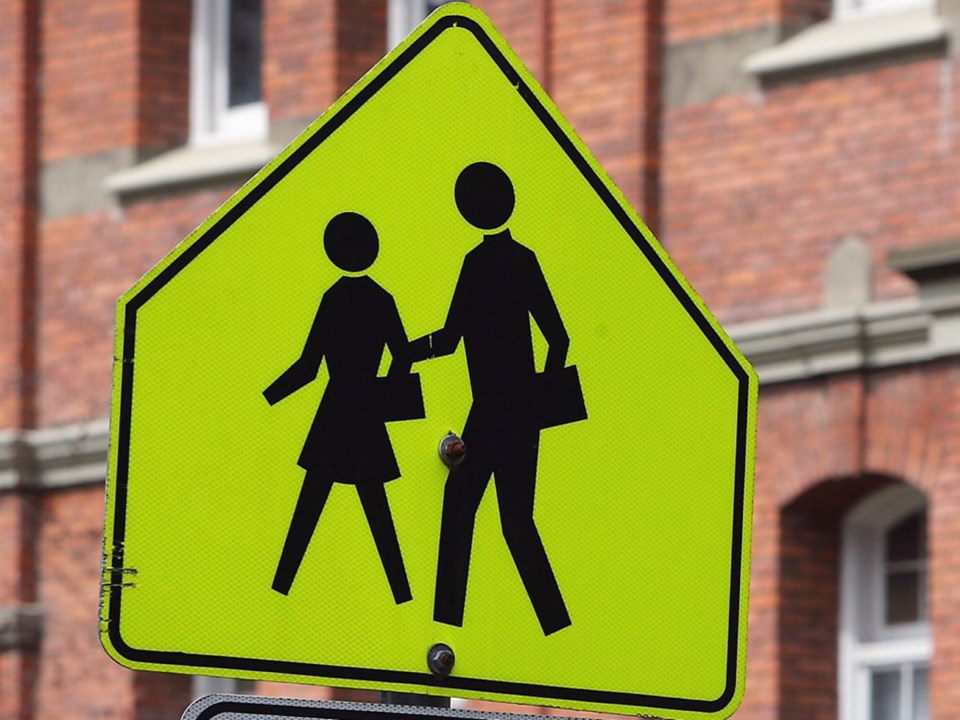As B.C. school districts plan for schools to reopen in September, education leaders will be making decisions based on a balance of educational and economic interests as well as limited and rapidly changing epidemiological evidence and advice.
Reopening schools, even on a part time basis, will require a series of agonizing budget juggling decisions on the part of government, school trustees, teachers, administrators and parents about how to implement precautions well beyond what has been necessary until now.
A survey across Canada indicates that school districts are planning to implement physical changes like designated entrances and exits for different student cohorts, sectioned off common spaces, and floor markings to direct foot-traffic flows that can help students and staff maintain physical distance.
Portable hand-sanitizing stations at entrances and common areas would also promote regular hygiene and could be added at minimal cost.
Permanent changes to the physical school environment, such as no-touch bathrooms or upgraded ventilation, will challenge school district budgets in the short term unless government injects significant targeted money into operating funds.
Fortunately, unlike our neighbours to the south, the questions of opening schools or not, wearing face masks, social distancing and frequent sanitizing have not been politicized beyond belief.
That’s a plus, but does not make decisions about the who, what, where, when, why and how of schools reopening here in Canada any easier.
So let’s reflect for a moment on the facts — what we know and what we don’t know about the virus and how it spreads.
The term “coronavirus” refers to a group of viruses that are known to cause respiratory issues and can lead to hospitalization.
COVID-19 is what experts are calling this particular disease — a new type of coronavirus that was not previously known or understood by health experts.
The good news is that the number of reported cases among children remains low. Few children have required hospitalization and none have died.
No school or daycare outbreaks have been reported thus far.
As of July 9, there were 49 COVID cases affecting children under 10 years of age and 85 cases in the 10-19 years of age category.
Nonetheless, epidemiologists now believe that the virus is spread mainly from person to person, often between people who are in close contact with one another (within about six feet), through respiratory droplets produced when an infected person coughs, sneezes, or talks and that these droplets can land in the mouths or noses of people who are nearby.
Those same scientists now agree that COVID-19 may be spread the more closely a person interacts with others and that the longer the interaction, the higher the risk of COVID-19 spread.
So while a visit to the grocery store takes an hour or so of careful masked interaction, that’s not the same as five hours a day, five days a week in a classroom.
What is not as clear, even now, is whether a person can get COVID-19 by touching a surface or object that has the virus on it and then touching their own mouth, nose or possibly their eyes.
There is a general consensus that it’s important not to be inside, in a contained space with a group of people.
What we don’t really know for sure is what the long-term effects people of any age may experience from having had the virus.
Scientists are the first to admit uncertainty about their findings about COVID. Epidemiologists are clear that they don’t know everything about COVID yet and sometimes even to need change what they thought they knew when abnormalities and irregularities surface.
That’s just part of the scientific process — hypothesize, test that thinking and then test again to confirm.
Dr. Bonnie Henry is among the scientists who have consistently advocated that while the virus, seemingly, can be contained through standard public health measures; social distancing, frequent hand washing, repeated cleaning and disinfecting frequently touched surfaces and covering the mouth and nose with a cloth mask when around others — there’s no cure yet.
Even though we’ve heard that advice over and over, daily observation demonstrates that a certain percentage of adults do not seem to be buying into those simple precautions.
And while kids listen to what adults say, they tend to imitate what adults do, or don’t do.
For teachers, convincing kids between the ages of five and 18 to follow the guidelines is going to be a Sisyphean task — pushing a boulder uphill only to see one slip cause it to roll all the way back down.
Even so, no amount of money spent equipping or retrofitting schools will be effective if student behaviour cannot be modified to seriously and rigorously adhere to health and safety protocols.
Supervising that will be a challenge teachers have never had to deal with before now.
Geoff Johnson is a former superintendent of schools.



